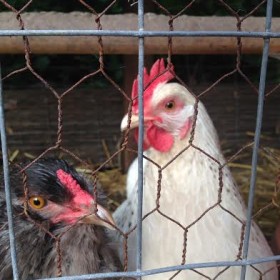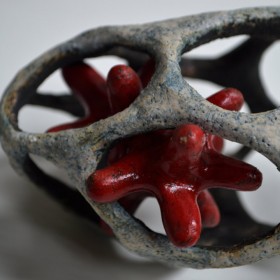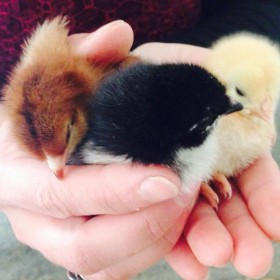This year Nate and I decided to try having backyard chickens, mainly because we wanted organic, pastured, nutritionally dense beautiful eggs from these happy birds. If you’re not up on your politically correct foodie speak, ‘pastured’ means chickens that run around in the grass eating bugs, slugs and plants as a major part of their diet. This makes for healthier, tastier eggs and is a big step up from cage-free. It’s been a great experience raising cute fluffy chicks into egg laying hens.
We coop them up at night for safety and during the day they roam the fenced garden area, which they clearly love. But, there is also a down side to not being in a cage all the time, in a word: predators. Where we live there are a lot of them, from foxes to mountain lions, our chickens really are vulnerable to it all not to mention our own dog who is infatuated with them. Over the past year, we’ve lost 2 birds to a predator, probably a bobcat. Since then, we’ve caged the birds for most of the day and only let them out when we’re around- which is kinda sad for the birds and also defeats the purpose of having pastured chickens.
It seems like a silly dilemma, obviously we should keep our birds safe from harm, but at what cost? The concept of caging is an idea I’ve been exploring for years through my nest series and a dilemma that we all feel. We want to be safe in our homes with locks and alarms but at the same time we’ve trapped ourselves in our own cages. And freedom is a beautiful and exciting venture, but we are left vulnerable to the elements. My work tries to explore the balance of this concept while I try to put it to practice in my own life.


